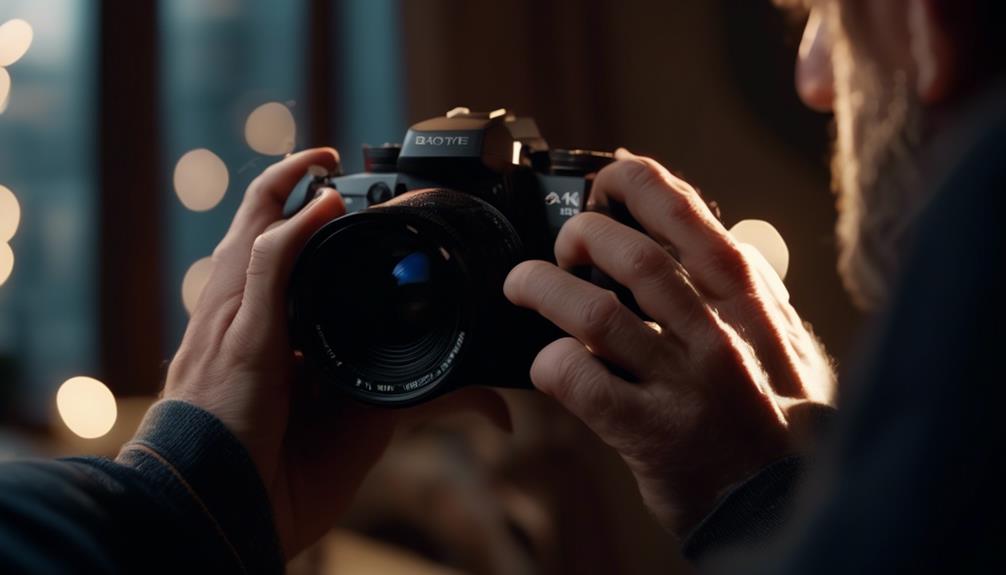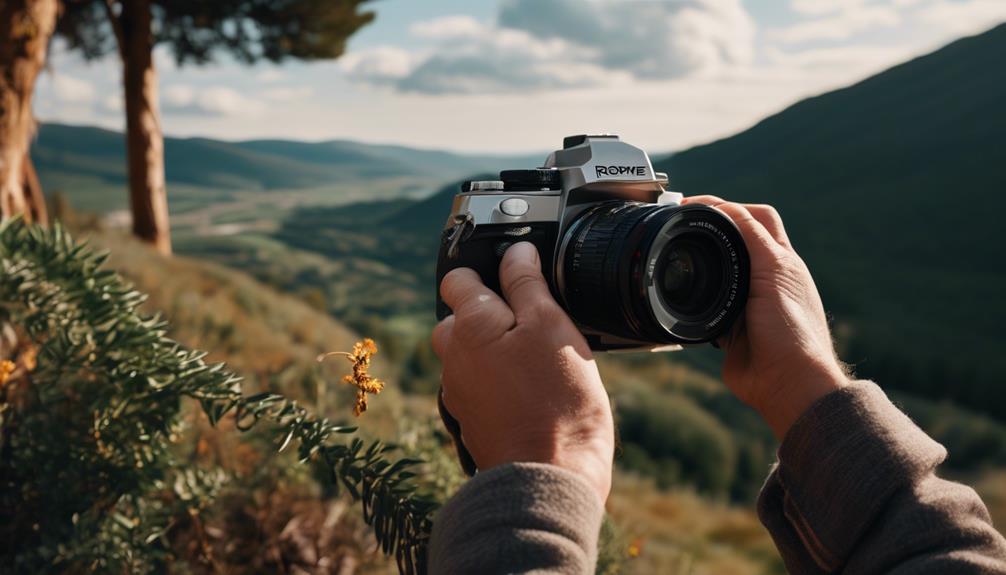Please note this post may contain affiliate links picked by me (Jay) that I have deemed may be of interest or relevant to you the reader of this.
These links do not affect the cost of the thing if you decide to purchase but i may get a little money if you choose to purchase.
For more information on my affiliate link policy click here.
Are you tired of taking ordinary photographs that lack that wow factor? Do you want to elevate your photography skills and capture images that truly stand out? Well, you've come to the right place!
In this beginner's guide, we will delve into the art of perfecting composition and framing in photography. From understanding the fundamental Rule of Thirds to utilizing leading lines, exploring symmetry and patterns, creating depth with foreground and background, and experimenting with framing techniques, I will share with you the secrets to creating visually stunning photographs.
So, buckle up and get ready to take your photography to the next level!
Key Takeaways
- The Rule of Thirds is a fundamental composition technique that can greatly enhance the visual appeal of your photographs.
- Leading lines can be used to guide the viewer's eye and create a sense of depth and movement in your images.
- Symmetry and patterns can add visual interest and create a balanced composition in your photos.
- Framing techniques, such as using lines and shapes, can help draw attention to your subject and create a more dynamic composition.
Understanding the Rule of Thirds
Understanding the Rule of Thirds is essential for creating visually compelling and balanced compositions in photography. This fundamental principle is a game-changer when it comes to capturing captivating images.
So, what exactly is the Rule of Thirds? Well, imagine dividing your frame into nine equal parts by drawing two equally spaced horizontal lines and two equally spaced vertical lines. The intersections of these lines create four points of interest, where the subject or key elements of your image should ideally be placed.
By adhering to the Rule of Thirds, you can create a sense of balance and harmony in your compositions. Placing your subject off-center and aligning it with one of the intersecting points adds visual interest and guides the viewer's eye through the image. This technique allows for more dynamic and engaging photographs, as it breaks away from the conventional habit of placing the subject in the center of the frame.
Moreover, the Rule of Thirds helps you to create a sense of depth in your images. By placing elements of interest along the grid lines, you can establish a visual hierarchy and lead the viewer's eye from one point to another, creating a more immersive experience. This technique is particularly useful when capturing landscapes or architectural subjects.
Incorporating the Rule of Thirds into your photography techniques not only enhances the composition but also encourages creativity and innovation. It allows you to think outside the box and experiment with different perspectives, angles, and framing choices. By challenging the traditional notions of composition, you can push the boundaries and captivate your audience with fresh and intriguing visuals.
To conclude, the Rule of Thirds is a powerful tool in the world of photography. It not only aids in creating visually balanced and compelling compositions but also encourages innovation and creativity. By understanding and incorporating this fundamental technique into your photography practice, you can elevate your images to new heights and captivate your audience with unique and captivating visuals. So, go ahead, embrace the Rule of Thirds, and unlock the full potential of your photography.
Utilizing Leading Lines
Utilizing leading lines in photography adds a dynamic and captivating element to your compositions, guiding the viewer's eye and creating a sense of depth and movement. By incorporating perspective and enhancing the overall visual experience, leading lines can take your photographs to the next level.
Leading lines are strong visual elements that draw the viewer's attention towards a specific point in the image. They can be found in various forms such as roads, fences, rivers, or even architectural structures. These lines act as a pathway for the viewer's eye, leading them through the image and creating a sense of direction and movement.
One way to effectively use leading lines is to position them strategically within the frame. Placing them diagonally can create a sense of dynamism and energy, while vertical lines can emphasize height and strength. By incorporating perspective, you can enhance the overall composition and make your images more engaging and visually appealing.
To better illustrate the impact of leading lines, let's take a look at the following table:
| Type of Leading Line | Emotion Evoked | Example Image |
|---|---|---|
| Diagonal | Energy | [Image Link] |
| Vertical | Strength | [Image Link] |
| Curved | Gracefulness | [Image Link] |
As you can see, each type of leading line evokes a different emotion in the viewer, adding depth and character to your photographs. Experiment with different compositions and perspectives to create unique and compelling images that captivate your audience.
Incorporating leading lines in your photography not only adds visual interest but also enhances the overall storytelling aspect of your images. It guides the viewer's eye, creates depth, and adds a sense of movement to otherwise static scenes. So, embrace the power of leading lines and let them transform your compositions into captivating works of art.
Exploring Symmetry and Patterns
Exploring symmetry and patterns in photography unlocks a world of captivating visuals, where repetition and balance come together to create mesmerizing compositions. It's an art form that allows us to discover and appreciate the beauty in the world around us. Whether it's the intricate symmetry found in nature or the abstract patterns in everyday objects, incorporating these elements into our photographs can truly elevate our work to new heights.
Here are five reasons why symmetry and patterns are worth exploring in photography:
- Symmetry in nature: Nature is full of symmetrical wonders, from the perfect reflection of a mountain in a calm lake to the intricate patterns on the wings of a butterfly. Capturing these symmetrical moments can create stunning and harmonious compositions.
- Abstract patterns in everyday objects: Look closely, and you'll find patterns all around you. From the lines and shapes of buildings to the textures and colors in a piece of fabric, these abstract patterns can add depth and interest to your photographs.
- Balance and harmony: Symmetry and patterns bring a sense of balance and harmony to a photograph. They create a visual rhythm that draws the viewer's eye and creates a sense of order and tranquility.
- Unique perspectives: By exploring symmetry and patterns, you can challenge yourself to find unique perspectives and compositions that others may overlook. This can lead to innovative and thought-provoking images that stand out from the crowd.
- Creative expression: Utilizing symmetry and patterns in your photography allows you to express your creativity in a visually striking way. It gives you the freedom to experiment with different angles, compositions, and focal points, resulting in images that truly reflect your artistic vision.
Creating Depth With Foreground and Background
As we continue our photographic journey, let's now uncover the captivating technique of creating depth with foreground and background, unlocking a world of immersive visuals that transport viewers into the heart of the scene. Adding dimension through perspective and using selective focus for depth perception are essential tools in the photographer's arsenal to create stunning images that captivate and engage the viewer.
One way to add depth to your photographs is by incorporating elements in the foreground, middle ground, and background. Imagine a landscape photograph where the foreground consists of vibrant flowers, the middle ground showcases a winding path, and the background reveals majestic mountains. This layering effect creates a sense of depth and draws the viewer's eye into the scene.
Another technique to enhance depth is by using selective focus. By focusing on a specific subject in the foreground, while slightly blurring the background, you can create a visual separation that mimics how our eyes perceive depth in real life. This technique not only adds depth but also directs the viewer's attention towards the main subject, making it the focal point of the image.
To summarize, creating depth with foreground and background is a powerful technique that adds dimension and visual interest to your photographs. By incorporating elements in different planes and using selective focus, you can transport viewers into the heart of the scene and create immersive visuals that leave a lasting impression. So, go ahead and experiment with this technique, and watch as your images come to life with depth and vibrancy.
Experimenting With Framing Techniques
Framing techniques in photography are a creative and dynamic way to enhance your images, allowing you to capture your subject in a unique and captivating manner. As a photographer, I'm constantly seeking innovative ways to experiment with framing techniques, pushing the boundaries of creativity and capturing stunning shots.
Here are five techniques that I've found to be particularly effective:
- Creative use of negative space: By intentionally leaving empty spaces around your subject, you can create a sense of balance and emphasis, drawing the viewer's attention to what's important.
- Incorporating framing techniques in portrait photography: Using elements such as doorways, windows, or natural surroundings, you can frame your subject within the frame itself, adding depth and context to your images.
- Layering and overlapping: By strategically positioning objects in the foreground and background, you can create a sense of depth and dimension, adding visual interest to your composition.
- Framing with lines and shapes: Utilizing leading lines or geometric shapes, you can guide the viewer's eye towards your subject, creating a strong focal point.
- Experimenting with unconventional frames: Think outside the box and explore unique objects or architectural features that can serve as frames for your subject, adding an unexpected twist to your photographs.
Frequently Asked Questions
What Are Some Common Mistakes Beginners Make When Trying to Understand the Rule of Thirds?
When it comes to understanding the rule of thirds in photography, beginners often make some common mistakes. One of the biggest errors isn't paying attention to the importance of balance within the frame. By neglecting this, their compositions can feel lopsided or uninteresting.
It's essential to remember that the rule of thirds is a guideline, not a rigid rule. Experimentation and breaking the rules can lead to innovative and captivating photographs.
How Can I Effectively Incorporate Leading Lines Into My Photography Composition?
Incorporating leading lines into photography composition is a powerful technique for creating dynamic and captivating images. By utilizing diagonal lines, I can add a sense of movement and depth to my photographs, drawing the viewer's attention towards the main subject.
These leading lines act as a visual guide, guiding the viewer's gaze and creating a sense of flow within the frame. This technique allows me to create visually compelling and innovative photographs that leave a lasting impression on the audience.
Are There Any Tips for Capturing Symmetry and Patterns in Nature Photography?
Capturing symmetry and patterns in nature photography is a skill that can truly elevate your photos.
By using reflections, you can create captivating symmetry that adds depth and interest to your images.
Additionally, exploring the use of repetition in capturing patterns can create a visually striking composition.
Nature offers an abundance of opportunities for symmetry and patterns, so keep an eye out for reflections in water, repeating shapes, or even natural formations.
Get creative and let your passion for innovation guide you in capturing these mesmerizing elements.
How Can I Create a Sense of Depth in My Photos by Using Foreground and Background Elements?
When it comes to creating a sense of depth in my photos, I've found that incorporating foreground and background elements is key. By placing an object or subject in the foreground and allowing the background to fade into the distance, it instantly adds depth to the image.
Additionally, playing with lighting and shadows can further enhance this effect, creating a dynamic and visually captivating composition.
Another technique I love is using color contrast to create a sense of depth, as it adds visual interest and draws the viewer's eye into the image.
What Are Some Unique Framing Techniques That Can Add Interest and Creativity to My Photographs?
Framing techniques using reflections and incorporating unconventional angles can truly elevate your photographs and add a captivating touch.
By strategically placing reflective surfaces in your frame, such as mirrors or water, you can create unique compositions that play with light and perspective.
Additionally, experimenting with unconventional angles, such as shooting from low to the ground or from high above, can bring a fresh and innovative perspective to your images.
These techniques are sure to add interest and creativity to your photographs.
Conclusion
In conclusion, mastering the art of composition and framing in photography is an exhilarating journey that allows you to capture the world from your unique perspective.
By understanding the Rule of Thirds, utilizing leading lines, exploring symmetry and patterns, creating depth with foreground and background, and experimenting with framing techniques, you can elevate your photography to new heights.
So, grab your camera, unleash your creativity, and let your passion for capturing stunning images drive you to create masterpieces that will leave your audience in awe.
Happy shooting!


